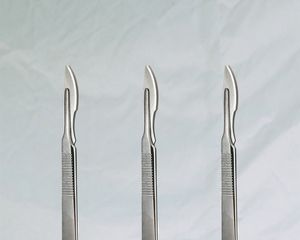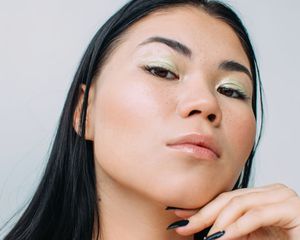
Marc Bordons / Stocksy
Every body is a perfect body, and that is not up for debate. In the world of social media where we are constantly reminded that our bodies are not good enough, it’s important to understand that the body you sit in at this very moment is beautiful and has gotten you to this point. That being said, there is also no shame in wanting to try something new. Fun fact: Women and those assigned female at birth generally have a higher percentage of body fat than those who are assigned male.
Body contouring can refer to any procedure performed with the goal of reshaping or refining one’s physique. “Ranging from defining muscles, targeting unwanted pockets of fat, or tightening lax skin—body contouring can refer to surgical, minimally invasive, or completely non-invasive treatments,” says Camille Cash, MD, a cosmetic plastic surgeon.
Below, Cash and aesthetic nurse practitioner Samantha Pang break down everything there is to know before scheduling your first body contouring session after weight loss.
Meet the Expert
- Camille Cash, MD, is a board-certified plastic surgeon in Houston.
- Samantha Pang, FNP-C is an aesthetic nurse practitioner at SkinSpirit in Beverly Hills.
What Is Body Contouring?
Body contouring, often known as body sculpting, is used to help eliminate fat, tighten skin, and shape areas of the body. There are different procedures that can be used to achieve body contouring, ranging from non-surgical options such as TruSculpt, SculpSure, Emsculpt, and CoolSculpting, to surgical options including tucks, lifts, and liposuction. Surgical options typically provide more noticeable results, but also run a higher risk. All forms of body contouring should be performed by a professional in an office or surgical setting.
Arms
Arm contouring, also known as an arm lift, typically targets what one might define as a saggy area on the arm. The end goal is to achieve a tight, toned-looking arm and regain definition. Plastic surgeons may opt to use liposuction, but there are non-surgical options to help temporarily achieve similar results. “Though much progress has been made in what can be achieved with non-invasive and minimally invasive procedures, they will never be a substitute for surgical results,” Cash notes.
Abdomen and Flanks
Flank is a simple way of referring to the side of the abdomen. Both the abdomen and flank areas are typically more prone to fat accumulation, making it a more popular area of concern for many. “The midsection tends to be the most common concern amongst the wide spectrum of body-contouring patients who come to my practice to address their aesthetic goals,” says Cash. “This is due to a variety of factors including the toll of pregnancy, excess skin following dramatic weight loss, and stubborn pockets of fat that often accumulate in the love handles, flanks, and/or lower abdomen that may be diet-and-exercise resistant.”
Buttocks and Thighs
Women are more prone than men to carrying body weight in their lower body, including the buttocks and thighs. So it comes as no surprise that the buttocks, thighs, and hips are often target areas for body sculpting. Pang recommends CoolSculpting to target these pesky areas. “It is important to note that CoolSculpting is intended for fat reduction, not weight loss. Therefore, ideal candidates for this treatment are those who are near their goal weight and have stubborn pinchable fat,” Pang prefaces. “Clients often choose CoolSculpting because it is a non-invasive, non-surgical option to treat unwanted fat. It is a great option for many people looking to remove stubborn fat that they haven’t been able to reduce through diet and exercise alone.”
Benefits of Body Contouring After Weight Loss
The benefits of body contouring are strictly cosmetic, but valid nonetheless. “For some patients who may feel they’ve hit a plateau in achieving their body goals, [body contouring] can help provide a boost to keep everything on the right track,” Cash shares. “I have patients tell me that not only do they feel more confident overall but that it’s opened up new wardrobe options, such as being comfortable going sleeveless for the first time in years. Feeling self-conscious about one’s body can certainly take a toll.”
Pang adds that with a non-surgical option like CoolSculpting, the added benefits are the effectiveness with little to no downtime. She finds that the treatment is generally well-tolerated, making it a safe option for body contouring.
How to Prepare for Body Contouring
For non-surgical body contouring, such as CoolSculpting, Pang says the best way to prepare is to “start working towards your ideal weight through good old diet and exercise.”
“As with any body contouring treatment, including surgical options, patients should ideally be as close to their goal weight as possible for optimal results,” Cash adds. “Body-contouring procedures are not a replacement for a healthy diet and exercise—especially since these healthy habits are needed to maintain results. Though I’ll never condone smoking or vaping, it is far more important for patients to quit for at least six weeks before undergoing surgery, or even some minimally invasive procedures, because nicotine significantly impairs wound healing.”
Like any treatment or process, if you have a health condition—serious or minor— it’s best to consult a trusted physician before treatment. Unsurprisingly, pregnant women should not be treated with any form of body contouring, including non-invasive options.
What to Expect During Body Contouring Procedures
For non-surgical body contouring procedures, the patient is awake and therefore alert during the process. “CoolSculpting is very well tolerated,” Pang says. “You can expect to feel a gentle suction upon placement of the applicator and a gradual cooling sensation once activated. Some describe the initial cooling sensation as placing an ice cube on the skin that eventually goes numb after five minutes. Once the treatment is complete the area is massaged for a couple of minutes. The massage can feel achy but dissipates quickly.”
Cash uses another non-surgical option, InMode Evolve. “During Evolve Tite treatments, you’ll feel a sense of warmth that some may describe as feeling similar to a heating pad or hot stone massage. Evolve Tone treatments use Electric Muscle Stimulation to feel like strong involuntary muscle contractions, but the level of intensity can be adjusted to each patient’s tolerance and preferences, even mid-treatment. The Evolve system has a call button that allows you to pause your treatment and have staff make adjustments if desired.”
During surgical procedures, such as liposuction, the patient will be under anesthesia and should expect to deal with post-surgical downtime and care.
Before and After
The patient’s abdomen is noticeably flatter, and the skin around both their abdomen and buttocks is tightened and more toned.
The patient's abdomen and hip area is noticeably tightened.
CoolSculpting vs. SculpSure
Both CoolSculpting and SculpSure are non-invasive body contouring options that are used to achieve similar results, but they take different approaches to getting the job done. “CoolSculpting is an FDA-approved, non-surgical treatment that aims to reduce unwanted fat through a process known as cryolipolysis (or the freezing of fat cells),” explains Pang. “It uses the precise application of cold temperatures to cause fat cell death. After about three days, our immune system begins to clear away those dead fat cells. The total clearing of the dead fat cells takes around three months. CoolSculpting sometimes can be mistaken for SculpSure, which is another non-invasive body contouring treatment. Instead of cooling fat cells, SculpSure uses heat from a 1060nm wavelength laser to destroy fat cells without injuring the skin.”
Potential Side Effects
Both Cash and Pang list the same potential side effects for their body sculpting procedures of choice.
- Redness
- Swelling
- Bruising
- Hyperpigmentation
- Soreness
- Numbness
- Tingling of the treated area
- Damage to skin texture
- Short-term muscle spasms
“Side effects are rare and typically resolve on their own but adverse reactions can occur, especially if the device is used improperly or if patients do not comply with pre- and post-care instructions,” says Cash.
“The most significant but rare side effect of cryolipolysis is Paradoxical Adipose Hyperplasia (PAH) which is the unexpected growth of fat instead of reduction,” adds Pang. “The exact cause of PAH is unknown, but it seems to only occur less than one percent of the time.”
When it comes to surgical procedures including liposuction and tummy tucks, serious side effects can occur. Consult a medical professional for specifics to the procedure of your interest, but understand that like any surgery, there is a higher risk for serious side effects when going under the knife.
The Cost
Costs range per type of procedure as well as per doctor. Pang shares that she charges $750 per applicator for CoolSculpting. Cash shares that pricing for Evolve varies depending on where you live, as well as how many areas of the body are being treated and with how many of Evolve’s modalities. One area typically starts at $2,200.
It is important to understand that a majority of body contouring treatments, including non-surgical, will likely result in a medical bill starting at four figures. According to 2020 statistics from the American Society of Plastic Surgeons, the average base cost of a surgical body contouring treatment is $3,637. Note that this is the average across the country, and people in states such as New York and California can typically expect prices much higher. Also note that this average does not include anesthesia, operating room facilities, or other related expenses.
Aftercare
For non-surgical treatments, the aftercare is slim. There is no downtime for treatments such as SculpSure, which is great for a patient with a busy schedule. Follow-up treatments and maintenance are just about the only aftercare you’ll need.
When it comes to surgical treatments, aftercare is more intense. The American Society of Plastic Surgeons notes that recovery time is typically a minimum of six weeks, and aftercare is crucial for maintaining safety and results. Your surgeon will have a detailed set of instructions for you, but aftercare often includes bandages and drains for your first three days, followed by compression garments for your first two weeks. Resuming normal activities will be slow and steady, but it’s important to avoid doing anything that will tamper with the recovery process.
The Final Takeaway
When diet and exercise are not enough to get rid of fat pockets, body sculpting is a great option to look into. Always remember these treatments are strictly cosmetic and never necessary. For non-surgical options, clients may need multiple rounds to the same area to see results, and results are typically temporary, so it’s important to maintain healthy habits.

















